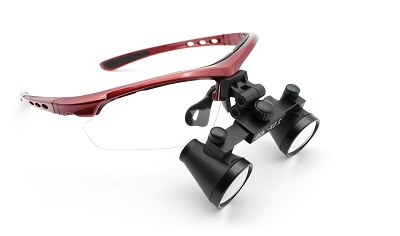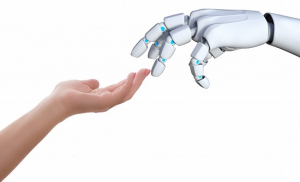Info tidbit – When is an intraoral camera used?
A so-called intraoral camera is a very compact digital camera in the form of a pen that is used by dental care specialists when they would like to take a POV (Point-of-View) look into the mouths of their patients and project said view onto a monitor. Normally, this happens during the preparation for longer and complex procedures in order to visually explain next steps and to calm down the patient.
Given that an intraoral camera is as small as a toothbrush head, it can reach virtually any part of the mouth and snap detailed and high-quality pictures or even videos and transmit them live to a monitor right next to the dentist chair. If needed, an intraoral camera can also zoom in on certain areas of the mouth and provide pictures that are enlarged several times to visualize even the smallest damages to teeth and gum lines which permits for even more detailed diagnoses.

Thanks to their versatility and the increasing level of detail of photos and videos, such intraoral cameras are used in an increasing number of procedures such as the identification and removal of tooth decay, periodontitis, tooth discoloring, and loose dental crowns or fillings.
The clear advantages of intraoral cameras can thus be summarized as follows:
- Diagnosis: As mentioned, intraoral cameras can be very useful during a dentist's diagnoses given that they enable live pictures and videos of a patient's oral cavity.
- Patient Communication: Thanks to the detailed pictures and live video feeds of a patient's oral cavity provided by an intraoral camera, a dentist can more easily and visually explain identified problems and illustrate his or her treatment plans.
- Live Procedures: Since an intraoral camera can provide live video feeds even during a procedure, it can provide both dentist and patient with helpful visual information of the treatment progress at all times.
- Quality Control: Another advantage of an intraoral camera and the pictures and videos that it can provide is that it can allow the dentist to have a live before/after comparison at any point during the treatment process which permits for a much easier treatment quality control right then and there when the patient is still in the dentist chair.
- No need for dental imprints: Yet another advantage of intraoral cameras that we would like to mention is that it can potentially replace the need for manual dental imprints with detailed and targeted pictures of a patient's oral cavity which it can directly transfer to a dentist's or a dental technician's computer for analysis and brace or prosthetic creation.


